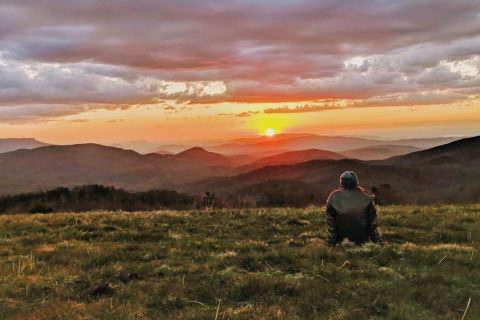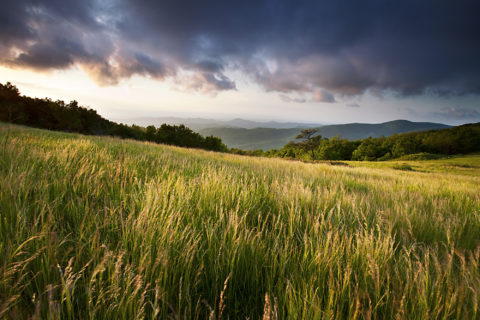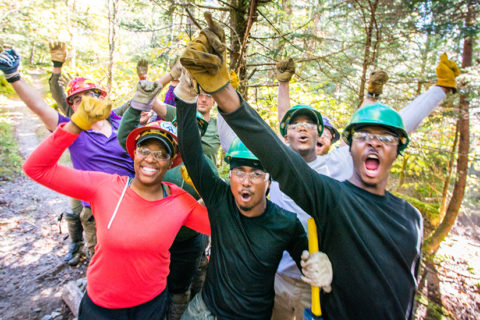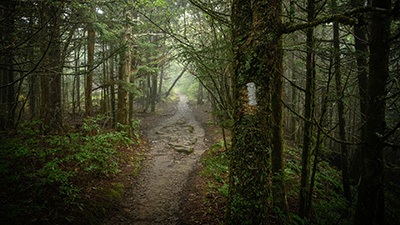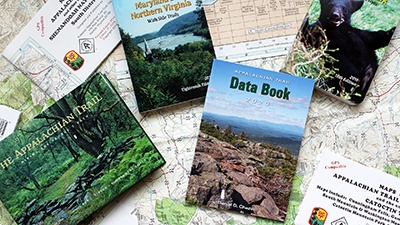by Alivia Acosta
A.T. Communities as Partners
When you find yourself following the white blazes of the Appalachian Trail you’re not only following rich cultural stories you are also following the work of thousands of volunteers. Each stone staircase placed by their rock bars, each blaze painted by their hands, and management practices developed between constituents throughout the entire Trail. Each with their own stories and motives but connected by the same thread, the Appalachian Trail.
Under the leadership of Myron H. Avery, Benton MacKaye, and Arthur Perkins, the construction of the Appalachian Trail is said to have been completed on April 14, 1937.Thirty-one years later Lyndon B. Johnson would sign into law the National Trails Systems Act, making the Appalachian Trail a unit of the National Park Service under the Department of Interior as one of the first National Scenic Trails.
The Trail was envisioned and created by volunteers who continue to make it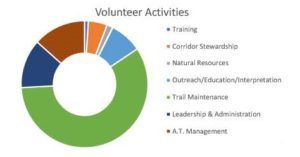 a reality today. While motivations differ, opportunities to volunteer are vast and varied. While it took decades to make the Trail what it is today, it’s not just about working on the tread anymore. Of the 210,923 hours volunteers spent maintaining and managing the Appalachian Trail last year, about one quarter of the efforts were spent not ‘in the field,” but doing the behind-the-scenes work of planning, recruiting, coordinating, advising decisions, and, yes, attending meetings. Simply wielding pick-mattocks and bow saws is not what all A.T. volunteers are doing all the time.
a reality today. While motivations differ, opportunities to volunteer are vast and varied. While it took decades to make the Trail what it is today, it’s not just about working on the tread anymore. Of the 210,923 hours volunteers spent maintaining and managing the Appalachian Trail last year, about one quarter of the efforts were spent not ‘in the field,” but doing the behind-the-scenes work of planning, recruiting, coordinating, advising decisions, and, yes, attending meetings. Simply wielding pick-mattocks and bow saws is not what all A.T. volunteers are doing all the time.
They could be teaching Leave No Trace at a local high school, meeting with A.T. Community volunteers to collaborate on a project, supporting a land acquisition, or sharing upcoming events on social media platforms. All of these efforts are important in supporting the future of the A.T.
The Harlem Valley Appalachian Trail Community (HVATC) recently hosted an “A.T. Day” in partnership with two local trail maintaining clubs as well as a host of other organizations. The community’s goal in hosting the event is to support the recruitment of new volunteers to the A.T. project. New and experienced volunteers spent the day performing essential trail maintenance tasks. Stancy Duhamel, Co-Chair of the Harlem Valley Appalachian Trail Community explains, “these projects provide an opportunity for experienced maintainers to teach their skills and tell their stories to future A.T. stewards as they work side by side on the broader mission of protecting, preserving, and promoting the Appalachian Trail.”
When you’re following the white blazes of the Appalachian Trail you aren’t always in the woods, sometimes you may find yourself following the street lights of a town it crosses through. Hikers commonly use these communities for their needed civilian resources, such as resupplying on food or taking a shower. The individuals living within these communities may see these white blazes as a welcoming resource and lifeline to the vitality of the community.
The intersection between Trail and Communities can be literal. Where a hiker walks down the sidewalks of a town following the A.T.’s white blazes on buildings and telephone poles, a Community of volunteers could also be driving a great distance to support the Appalachian Trail.
Communities are a part of the Trail experience. Optimizing the mutualistic benefits between communities and clubs is vital to the protection of the trail’s larger landscape, and to the longevity of clubs through new volunteer recruitment.
A recent analysis by intern Tatiana Magee, ATC’s Community Research Coordinator, discovered the following benefits between the Hot Springs Community in North Carolina and the Appalachian Trail, and is summarized by the mind map depicted below.

A similar small town of Round Hill, VA recently celebrated its designation as the 47th A.T. Community along the Trail. The event drew 946 registered participants in a community that has just 668 residents. Together with other A.T. Communities of Berryville, Front Royal, Harpers Ferry, volunteers from the Round Hill are currently collaborating to develop projects that tie these towns together, similar to the way the Trail ties them together.
The Trail is a simple footpath that is more than physically connecting. A following of dedicated volunteers is growing and their connective collaborations aim for the same goal. We all walk the same path, creating a brighter future for an invaluable resource, the Appalachian Trail.

